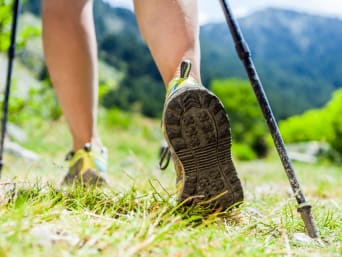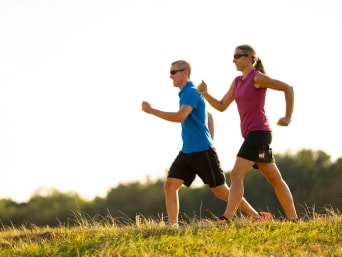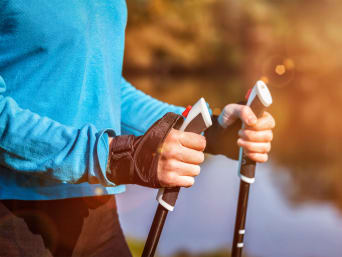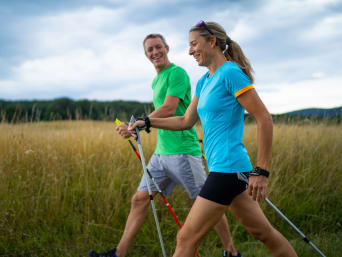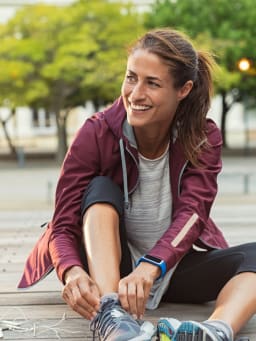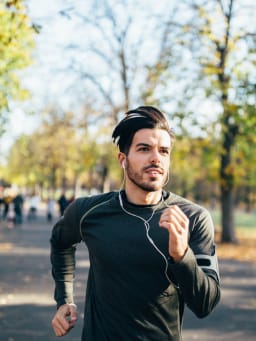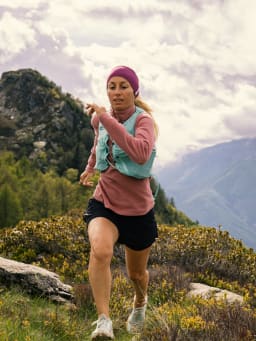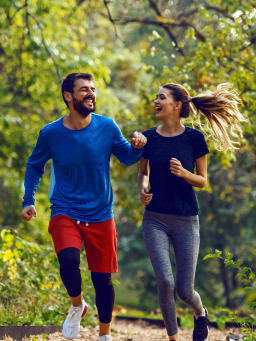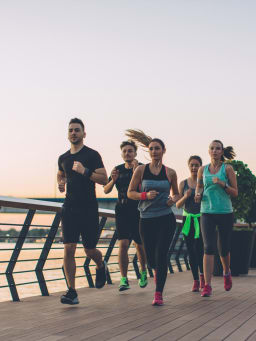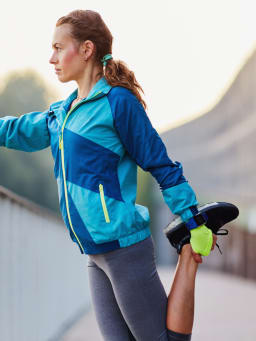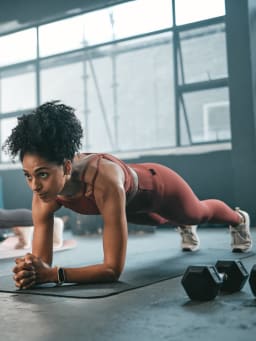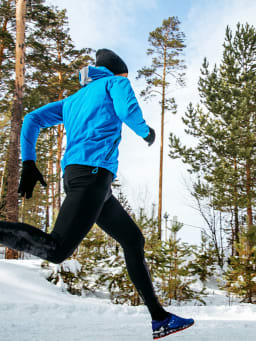Walking & Nordic Walking for beginners
People who have not been active in a long time or are recovering from an injury or illness need a suitable sport to get moving again. Walking and Nordic Walking are the perfect starting point. They are very easy to learn and offer a great introduction to the world of walking for every age group. That's why you'll find valuable tips and information on these two sports as well as getting the right equipment in this article.
What is the difference between walking and Nordic walking?
Walking and Nordic Walking are both endurance sports that allow you to push yourself yet stay true to your pace and performance level. The two sports can easily be distinguished by a simple technique: Walking is a brisker form of walking in which you use your arms, while Nordic walking involves the use of special walking poles. This results in the following training differences between walking and Nordic walking:
Walking: you mainly strengthen the foot, leg, and pelvic muscles.
Nordic walking: with the help of the special Nordic walking poles, the upper body and arm muscles are also trained. This makes Nordic walking an effective whole-body workout.
If you use the right technique when walking and Nordic walking and consistently pursue your sporting goals, you can improve your stamina, strengthen your cardiovascular system, and remain physically fit even into old age.

The best results in walking and Nordic walking are achieved when you cover 120 steps per minute. At this speed, your whole body is challenged but not overloaded. If you are just starting your training, you can set this pace as your goal and work towards it at your own pace.
Requirements for walking and Nordic walking
Walking and Nordic walking are both based on normal walking - the most natural way for us to move. Anyone can start the sport and learn the technique behind the movements in no time. Unlike jogging and running, walking and Nordic walking are easy on the joints and are therefore also suitable for senior citizens, people with joint problems or athletes in the rehabilitation phase after an injury.
In addition, the intensity of the training can be adjusted to suit your performance level. This way, Nordic walking allows even absolute beginners access to a sporting activity. You can regulate the intensity of your walking session depending on your stride frequency, the strength with which you use your arms and the terrain. If you want to increase your intensity after some time of training, walking sports offer a good basis for running later.
What equipment do I need for walking or Nordic walking?
Besides a pair of good Nordic walking shoes, you only need a functional sports outfit and possibly a pair of walking poles. When it comes to sportswear, you can opt for lightweight functional materials that regulate body temperature and are better able to wick sweat away from the body. When walking in autumn and winter, you should wear lots of thin layers.
Nordic walking shoes: what to consider?
The most important part of your equipment is the right footwear. Whether you like to walk or try Nordic walking, you can usually find the right pair for both sports under the name "Nordic walking shoes". Your Nordic walking shoes will carry you for many kilometres of enjoyment and without injury. Therefore, you should get the best quality you can afford when buying shoes and make sure that they fit your feet perfectly.
These features characterise a good Nordic walking shoe:
Good impact protection.
The shoe supports the natural rolling movement of the foot.
It has a strong tread, which also provides grip on stony surfaces.
The shape gives you enough stability.
The shoes are very comfortable to wear.
Make sure you have enough space in your walking shoes. As a rule of thumb, yourthumb should fit between the tip of the shoe and your big toe. It is also advisable to replace your shoes after about 1,000 kilometres. This will ensure that your shoes are not too worn and that you can continue to benefit from positive features such as good cushioning.
How do I find the right Nordic walking poles?
Your Nordic walking poles should fit you and be adjusted to your walking style. There are various models on the market that have different characteristics. Here are some criteria you can consider when choosing the right Nordic walking poles:
Material: walking poles made of carbon are very light, easy to handle and easier to set up. Poles made of aluminium, on the other hand, are a little heavier. They put more strain on the arm muscles and are more difficult to place on the ground. Nordic walking beginners should start with walking poles made of carbon to learn good techniques.
Size: many models are height adjustable. This is particularly good for children and young people, as the walking poles can grow with them. To find out the right pole length for your Nordic walking poles, you can follow the following rule: place them vertically in front of you and grasp the handles, the angle between the upper and lower arm should be 90 to 100 degrees.
Pole tip and baskets: make sure that your Nordic walking poles have a well-made metal tip. If you prefer to walk on natural ground, you need a pointed end that grips the soft ground. For asphalt or other harder surfaces, add a rubber tip to cushion the impact.
How to get started with (Nordic) walking
If you want to start walking or Nordic walking, the perfect way is simply to go for a walk. Gradually increase the pace by increasing the cadence, but not the length of the stride. This helps protect your joints. At a certain speed, activate your arms and let them swing loosely.
If you want to learn Nordic walking, it is a good idea to have a trainer show you the technique beforehand. This will protect you from incorrect strain and you can enjoy your whole-body workout.
Tips that can help (Nordic) walking beginners get started
As a beginner, you can take these tips to heart to enjoy your new hobby right from the start:
For both sports, keep an active and upright posture.
Do a thorough warm-up and cool-down before and after your training session.
Try to schedule your exercise sessions regularly. It is more effective to run shorter distances several times a week. For example, train three times a week for about 20 to 30 minutes.
Start with a flat route. You can add hills later as your endurance increases.
Be patient with yourself and set realistic goals. It will take a few weeks before you see the first results. Therefore, try not to demand too much of yourself. Keep an eye on your goals and keep working towards them.

In some countries, Nordic walking is recognised by health insurance companies as a preventative measure. Check with your health insurance company to see if they will cover a part of the cost of a Nordic walking course. You can obtain the address of a qualified trainer in your area from your health insurance company.
Conclusion: discover the positive benefits of Nordic walking
Whether you are a beginner, looking to get back into shape or simply want to discover a new sport to balance out your day, you can start walking or Nordic walking at any time. Both sports are easy to learn and are based on our natural movements. In addition, apart from a pair of good Nordic walking shoes and possibly walking poles, you don't need any other equipment to start your new hobby. Therefore, both sports are perfect for beginners and seniors who want to keep fit.
______________________________________________
References and further information
https://bristolnordicwalking.co.uk/blog/nordic-walking-vs-ordinary-walking-flat-research-results/
(Last accessed on 15.01.2024)
https://bristolnordicwalking.co.uk/blog/ten-technique-tips-nordic-walking/
(Last accessed on 15.01.2024)
https://restless.co.uk/health/healthy-body/a-beginners-guide-to-nordic-walking/
(Last accessed on 15.01.2024)
https://www.t3.com/features/nordic-walking
(Last accessed on 15.01.2024)
The image sources in this text are in chronological order:
Cover photo: iStock.com/blyjak
1. Image in text: iStock.com/amriphoto
2. Image in text: iStock.com/f9photos
3. Image in text: iStock.com/amriphoto
